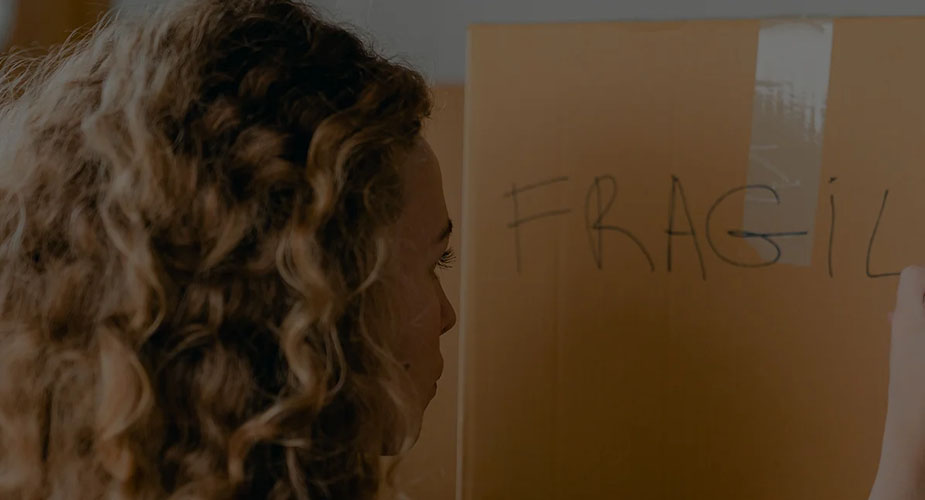- May 15, 2023
Moving is a daunting task, especially when it comes to packing fragile furniture. Furniture is not only heavy but it is also fragile and needs to be packed carefully to prevent damage during the move. Earthrelo, one of the fastest-growing international moving companies, understands the complexities of international moving and specializes in providing shipping and relocation services to expatriates and private clients. They have extensive experience in packing fragile furniture and ensuring its safe transport.
In this article, we will discuss the importance of packing fragile furniture properly, and how to pack it safely for a move. We will also cover Earthrelo’s expertise in handling international moves and ensuring the safe transport of fragile items. By following these tips and guidelines, you can have a successful and stress-free move.
Section 1: Preparing for Packing
Before packing your fragile furniture, it is important to prepare properly. This involves conducting a thorough inventory of all furniture items to be packed, acquiring the necessary packing supplies, clearing pathways, and creating a designated packing area, and disassembling furniture if necessary.
Conducting a thorough inventory of all furniture items to be packed is crucial. This will help you determine the size and quantity of boxes needed, and also help you identify which items require extra care and attention during the packing process. Once you have created your inventory list, you can begin acquiring the necessary packing supplies.
The necessary packing supplies include boxes, packing paper, bubble wrap, and tape. It is important to invest in good quality packing supplies to ensure that your fragile furniture is properly protected during the move. You can purchase these supplies from a moving company or a local hardware store.
Clearing pathways and creating a designated packing area is important for safety and efficiency. Make sure that there is enough space to move around and that the area is free of any hazards. You can also protect your floors and carpets by laying down cardboard or plastic sheets.
Disassembling furniture can help make the packing process easier and also protect your furniture during the move. For example, if you are packing a table, remove the legs and wrap them separately. This will make the table easier to pack and transport, and also prevent any damage during the move.
Section 2: Packing Fragile Furniture
Packing fragile furniture requires a great deal of care and attention to detail to prevent damage during transport. Proper packing materials should be used to ensure the items are fully protected. The first step in packing fragile furniture is to wrap each item in packing paper, securing it with tape. This helps to prevent scratches and dents.
An additional layer of protection can be added by using bubble wrap. This should be wrapped around the item before placing it in the box. For delicate items like glass tabletops and mirrors, it is essential to use specialized packing materials. Foam inserts are a great option for protecting corners and edges. These should be the same size as the item being packed to ensure a tight fit.
When stacking items in boxes, it is essential to stack them carefully and fill any empty space with packing materials. This prevents the items from shifting during transport and protects them from damage. Fragile items should be packed separately from heavy or bulky items to prevent damage.
Finally, label the boxes as “fragile” and indicate the contents and the room they belong to. This will ensure that the boxes are handled with care during the move and that they are placed in the correct room in the new location.
In summary, packing fragile furniture requires attention to detail, specialized packing materials, and careful stacking to prevent damage during transport. Proper labelling of the boxes will ensure that they are handled with care and placed in the correct location in the new home.Top of Form
Section 3: Loading and Transporting Furniture
Loading and transporting furniture is a critical part of the moving process. This involves carefully lifting and loading packed boxes onto the moving truck, strategically placing boxes to prevent shifting during transport, securing furniture with moving straps and blankets to prevent damage during transit, and communicating with the moving team about any special instructions or concerns regarding fragile items.
When loading the moving truck, it’s important to make sure that the heaviest items are placed on the bottom and the lighter items on top. This will help prevent the boxes from collapsing or being crushed during transit. Additionally, the boxes should be stacked in a way that prevents shifting during transport. Using moving straps and blankets to secure furniture is also important to prevent damage.
When it comes to fragile furniture, extra precautions need to be taken during the loading process. These items should be loaded onto the truck last so that they are easily accessible when it’s time to unload. They should also be placed in an area of the truck where they are less likely to shift or be damaged during transit.
Communicating with the moving team about any special instructions or concerns regarding fragile items is crucial to ensuring their safe transport. If there are any items that require extra care or attention, such as antique furniture or delicate glass items, be sure to let the moving team know. They can take extra precautions to ensure these items are properly packed and loaded onto the truck.
Section 4: Unpacking Fragile Furniture
Once you arrive at your new home, the unpacking process begins. This involves carefully unpacking boxes and placing items in their designated rooms. It’s important to take your time during this process to prevent damage to fragile furniture.
When unpacking fragile items, inspect each item for any damage that may have occurred during transit. If any items are damaged, make sure to document the damage and contact your moving company as soon as possible. They can assist with filing a claim and resolving the issue.
As you unpack boxes, be sure to dispose of packing materials responsibly. This may involve recycling cardboard boxes or properly disposing of packing paper and bubble wrap. Your moving company can provide guidance on the best way to dispose of these materials.
Lastly, reassemble any furniture that was disassembled for transport. Take your time and follow the manufacturer’s instructions to ensure that the furniture is properly put back together.
Conclusion
Moving can be a stressful and overwhelming process, especially when it comes to packing and transporting fragile furniture. However, with the right preparation and precautions, you can ensure that your furniture arrives at your new home safely and without damage.
Earthrelo is an experienced and professional moving company that specializes in packing and transporting fragile furniture. They have a team of highly skilled movers who are trained to handle delicate items with care and precision.
Earthrelo understands that fragile furniture requires special attention during the moving process. That is why they use high-quality packing materials and specialized techniques to ensure that each item is properly protected. Their movers are experienced in packing fragile furniture and are trained to handle each item with care.
Moreover, Earthrelo has access to a range of packing materials, including bubble wrap, foam inserts, and specialized boxes, to ensure that each item is packed securely. They also have the necessary equipment to move heavy or bulky items safely.
In addition, Earthrelo provides a comprehensive moving service, including packing, loading, transporting, unloading, and unpacking. They can also provide storage solutions for those who require it.
Overall, Earthrelo’s expertise in packing and transporting fragile furniture makes them an excellent choice for those who are looking for a professional and reliable moving company. With their experience, knowledge, and attention to detail, they can ensure that each item arrives at its destination in perfect condition.
Remember to take your time, conduct a thorough inventory, acquire the necessary packing supplies, properly wrap and pack fragile items, communicate with the moving team, and dispose of packing materials responsibly. With these steps in mind, you can enjoy a successful move and start settling into your new home.




